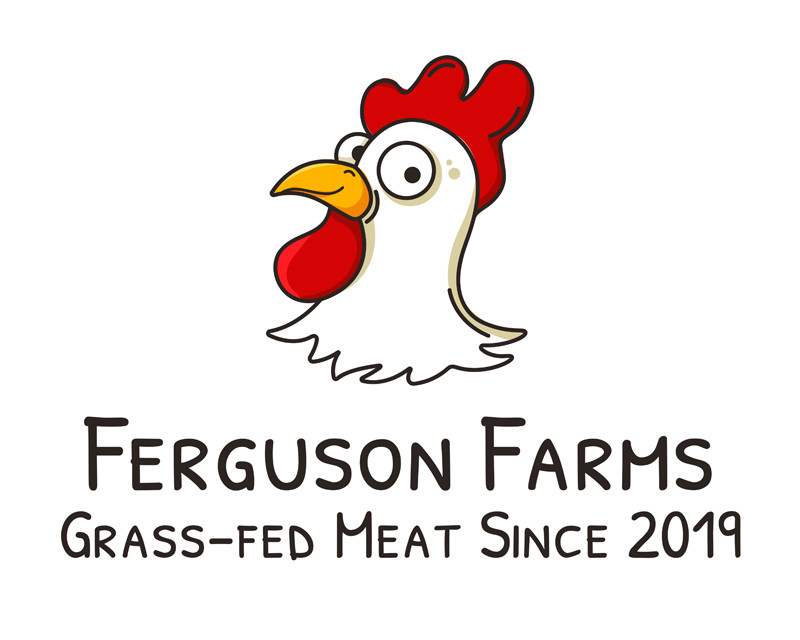Steak Cuts Ranked: Tri Tip to Ribeye
posted on
February 18, 2024
When it comes to steak, everyone has their favorite cut. Whether you're a fan of the rich marbling of a ribeye or the lean, beefy flavor of a sirloin, there's no denying the allure of a perfectly cooked piece of beef. At Ferguson Farms, we understand the importance of quality and variety. That's why we're diving into the world of steaks to bring you a comprehensive ranking of the most popular cuts. From the famous Ribeye to the less known Tri-Tip, let's explore the top steaks that deserve a spot on your dinner table tonight.

1. Ribeye Steak
The Ribeye Steak takes the crown in our ranking. Known for its rich marbling and tender texture, this cut comes from the rib section of the cow. The fat marbling is key to its flavor, making it one of the juiciest and most flavorful steaks available. Perfect for grilling or pan-searing, the Ribeye promises a melt-in-your-mouth experience that's hard to beat.
2. Sirloin Steak
Often called Top Sirloin, this boneless steak hails from the sirloin section of a cow. While it doesn't boast the fat content or intramuscular marbling of the Ribeye, Sirloin steaks are beloved for their beefy flavor and relatively lean profile. They're best enjoyed grilled or pan-seared to a juicy medium-rare.
3. Filet Mignon
Filet Mignon, the most tender steak of all, is a fine-grained cut taken from the smaller end of the tenderloin. Its buttery texture and delicate flavor make it a favorite among steak lovers. Though it lacks the fat marbling of other cuts, its tenderness is unparalleled. Filet Mignon is best cooked quickly over high heat to preserve its moisture.
4. T-Bone Steak
A T-bone steak offers the best of both worlds: a piece of tenderloin and a section of strip steak, separated by a T-shaped bone. This cut is perfect for those who can't decide between the tenderness of a Filet Mignon and the beefy flavor of a New York strip. Grilling is the way to go with T-bone, allowing the bone to impart additional flavor to the meat.
5. Porterhouse Steak
Similar to the T-bone, the Porterhouse steak is larger and contains more tenderloin. It's essentially a bigger, better version of the T-Bone, making it ideal for sharing. Like its smaller cousin, the Porterhouse benefits from grilling, which enhances its rich flavors and tender textures.
6. New York Strip
Also known as the Strip Steak, this cut is known for its fine texture and moderate fat marbling. It comes from the short loin of the cow, offering a balance between tenderness and flavor. The New York Strip is versatile, excelling in both grilling and pan-searing methods.
7. Flank Steak
Flank steak is a large, flat cut that's known for its strong, beefy flavor. It's leaner than other steaks and has a great texture that's perfect for marinating. To achieve the best results, cook it quickly over high heat and slice it against the grain. Flank steak is excellent for fajitas, stir-fries, and salads.
8. Skirt Steak
Skirt steak is similar to Flank in its texture and flavor but comes from the cow's diaphragm muscles. It's incredibly flavorful and, like Flank, benefits from marinating. Skirt steak is best cooked quickly over high heat and sliced against the grain. It's the traditional choice for making fajitas.
9. Tri-Tip Steak
Tri-Tip, a lesser-known cut, is gaining popularity for its rich flavor and versatility. This triangular cut from the bottom sirloin is lean, tender, and full of flavor. It's excellent for roasting or grilling, and can be sliced into steaks or cooked as a whole roast.
10. Chuck Eye Steak
Often referred to as the "poor man's Ribeye," the Chuck Eye steak comes from the upper shoulder of the cow. While it may not have the same level of marbling as a true Ribeye, it's still incredibly flavorful and tender when cooked properly. It's a great value cut that's perfect for everyday meals.
Cooking Tips for the Perfect Steak
Regardless of the cut you choose, achieving the perfect steak comes down to a few key principles:
- Season Generously: Salt and pepper are your best friends when it comes to steak. Season your steak generously before cooking to enhance its natural flavors.
- High Heat: To achieve a beautiful sear and lock in juices, cook your steak over high heat. Whether you're grilling or pan-searing, make sure your cooking surface is hot before the steak hits it.
- Resting: Allow your steak to rest for a few minutes after cooking. This lets the juices redistribute throughout the meat, ensuring a juicy, flavorful steak.
Conclusion
Steak is a versatile and beloved dish that can cater to a wide range of tastes and preferences. Whether you prefer the luxurious tenderness of a Filet Mignon or the robust flavor of a Ribeye, there's a steak out there for everyone. By understanding the unique qualities of each cut and mastering the basics of steak preparation, you can elevate your culinary experience and enjoy restaurant-quality steaks right at home.
At Ferguson Farms, we're committed to providing you with the highest quality beef, from USDA Choice to Prime and even Wagyu.




